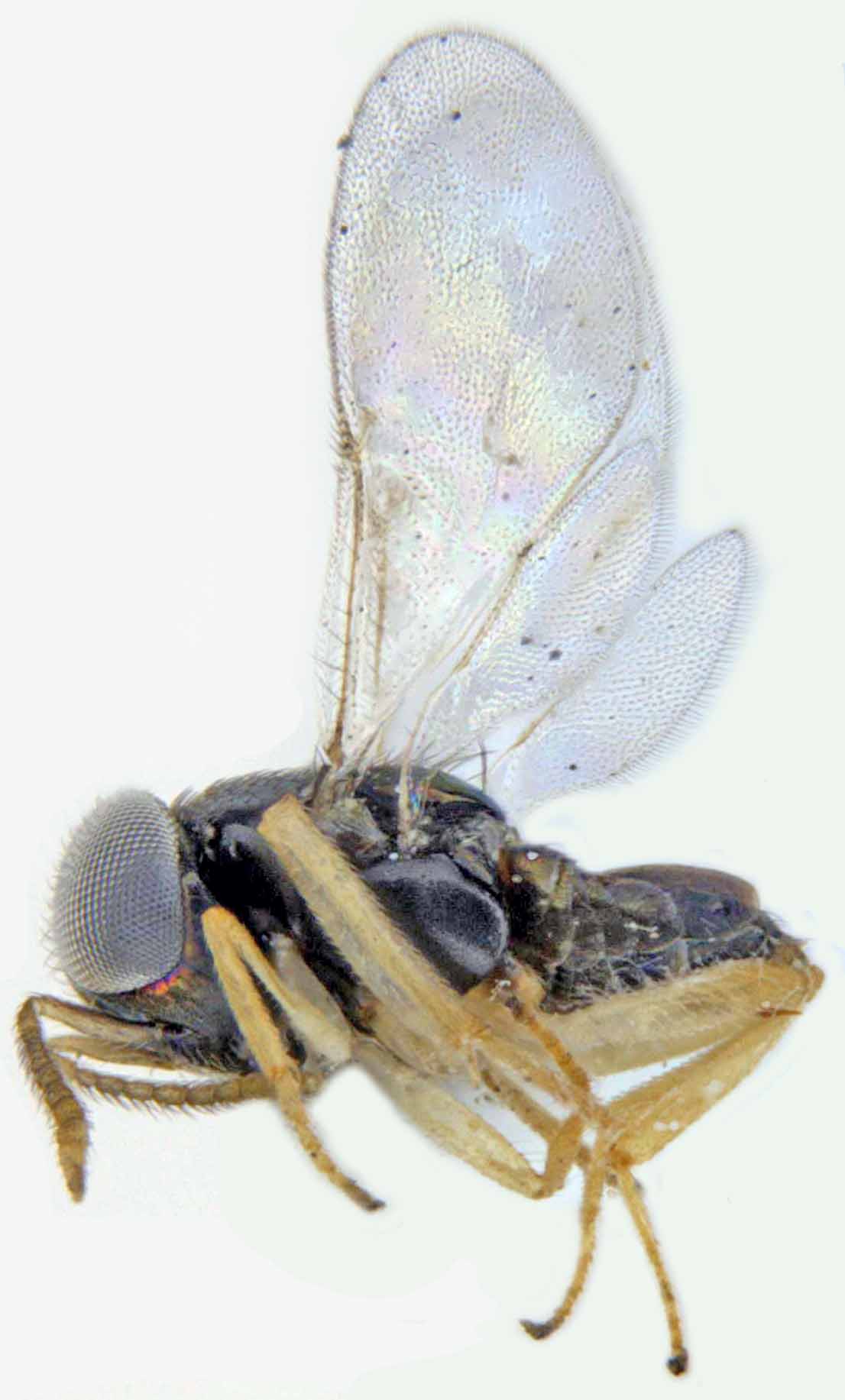 |
Scientific nameOoencyrtus pallidipes (Ashmead)
Taxonomic positionInsecta: Hymenoptera: Chalcidoidea: Encyrtidae
DiagnosisFemale: Body dark brown to blackish; head metallic green; mesoscutum dull bluish green; scutellum dull green anteriorly with slightly coppery tinge, shinning metallic green in posterior one quarter; flagellum testaceous- yellow; all legs including coxae yellow. Metasoma completely dark brown to blackish, sometimes with small whitish/yellowish marks on TI laterally. Ovipositor sheaths yellow.
Body length 1.15 mm. Antenna filiform, F1-F5 longer than wide, F6 slightly longer than wide. Frontovertex 0.3 × width of head. Mandibles with one tooth and one broad truncation. Scutellum anteriorly punctate-reticulate, posterior one quarter smooth; fore wing with large asetose basal area; linea clava open. Ovipositor very slightly exserted, 1.3 times as long as mid tibia.
Male: 0.95-0.98 mm. Similar to female except flagellum pale yellow, F1 smaller than any individual segment in between F2−F6, all segments longer than wide and covered with setae longer than diameter of individual segment; frontovertex 0.2 × width of the head. 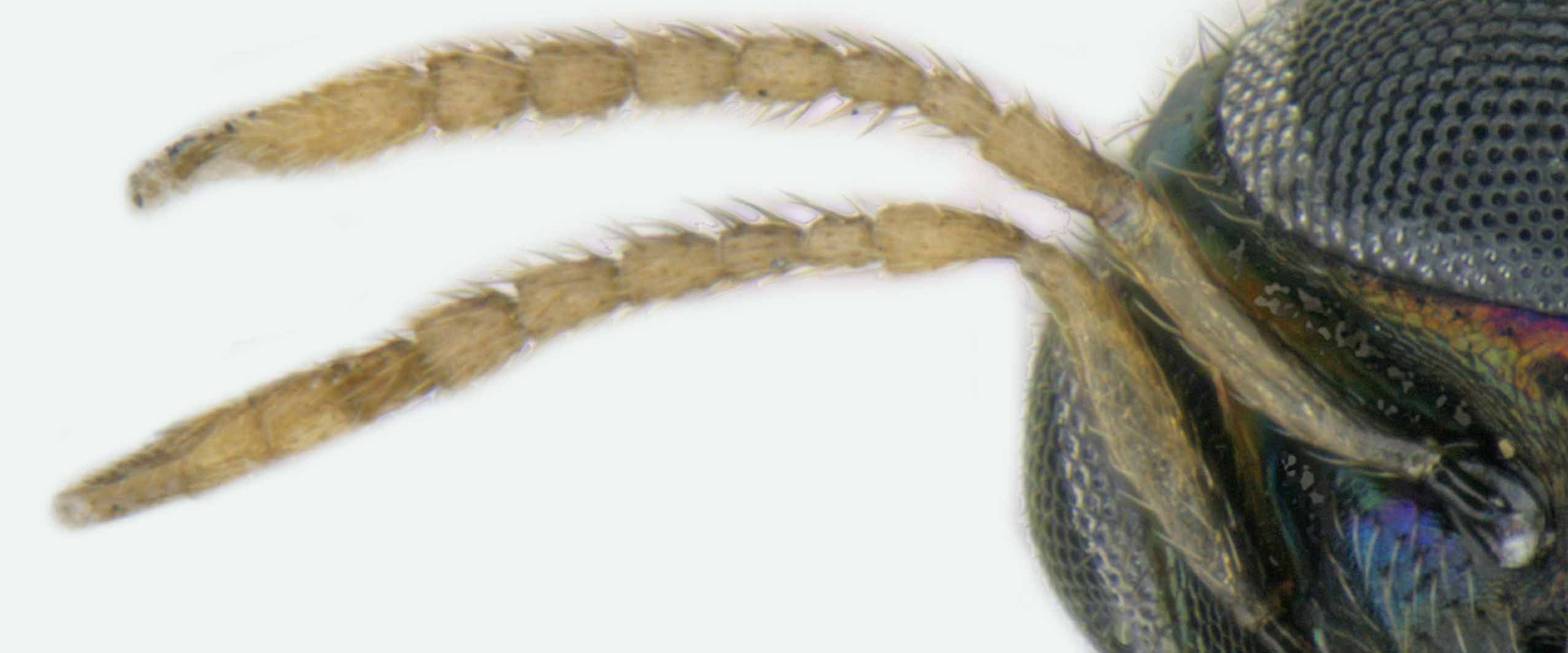 Antenna Antenna
 Head Head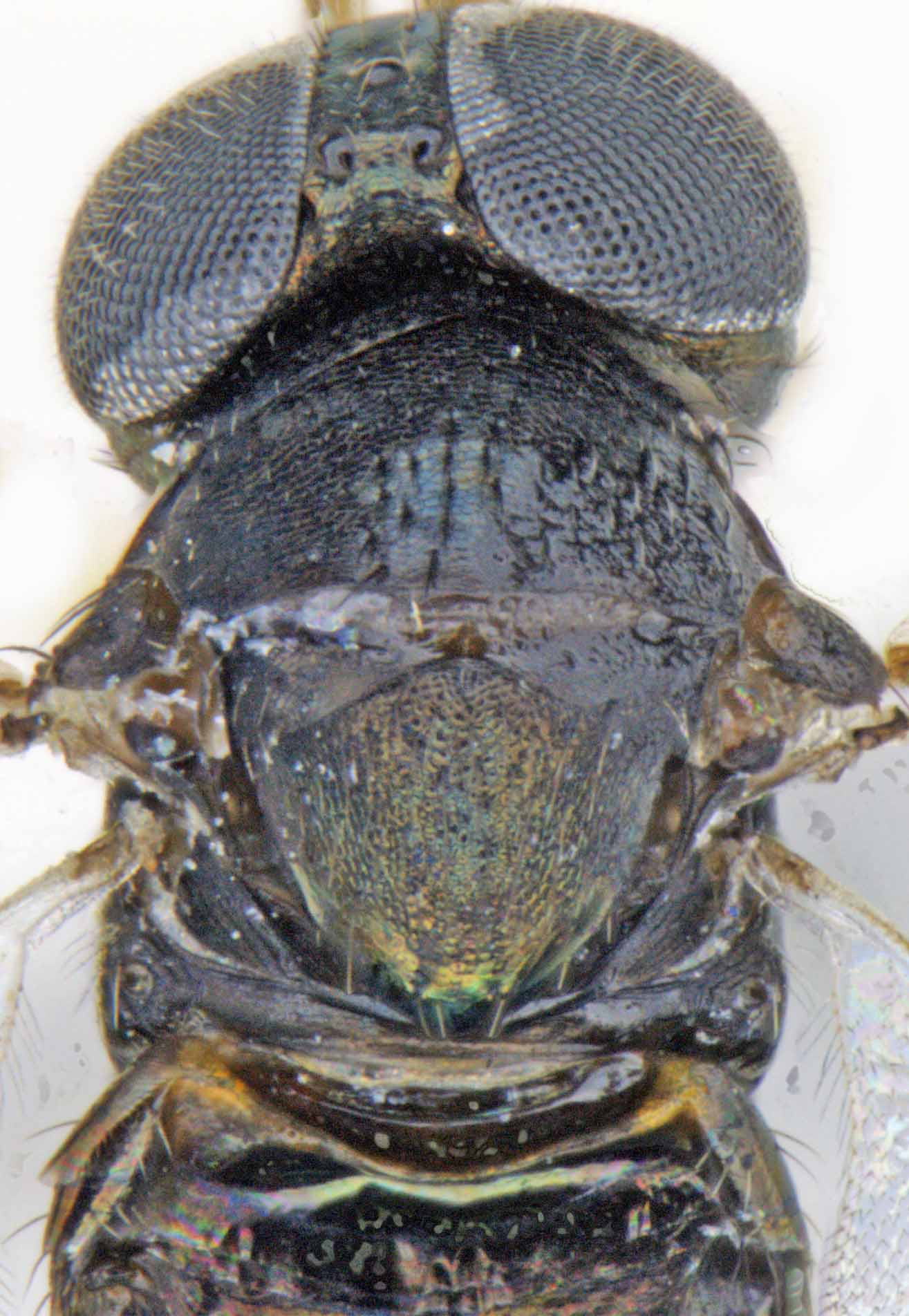 Mesosoma Mesosoma
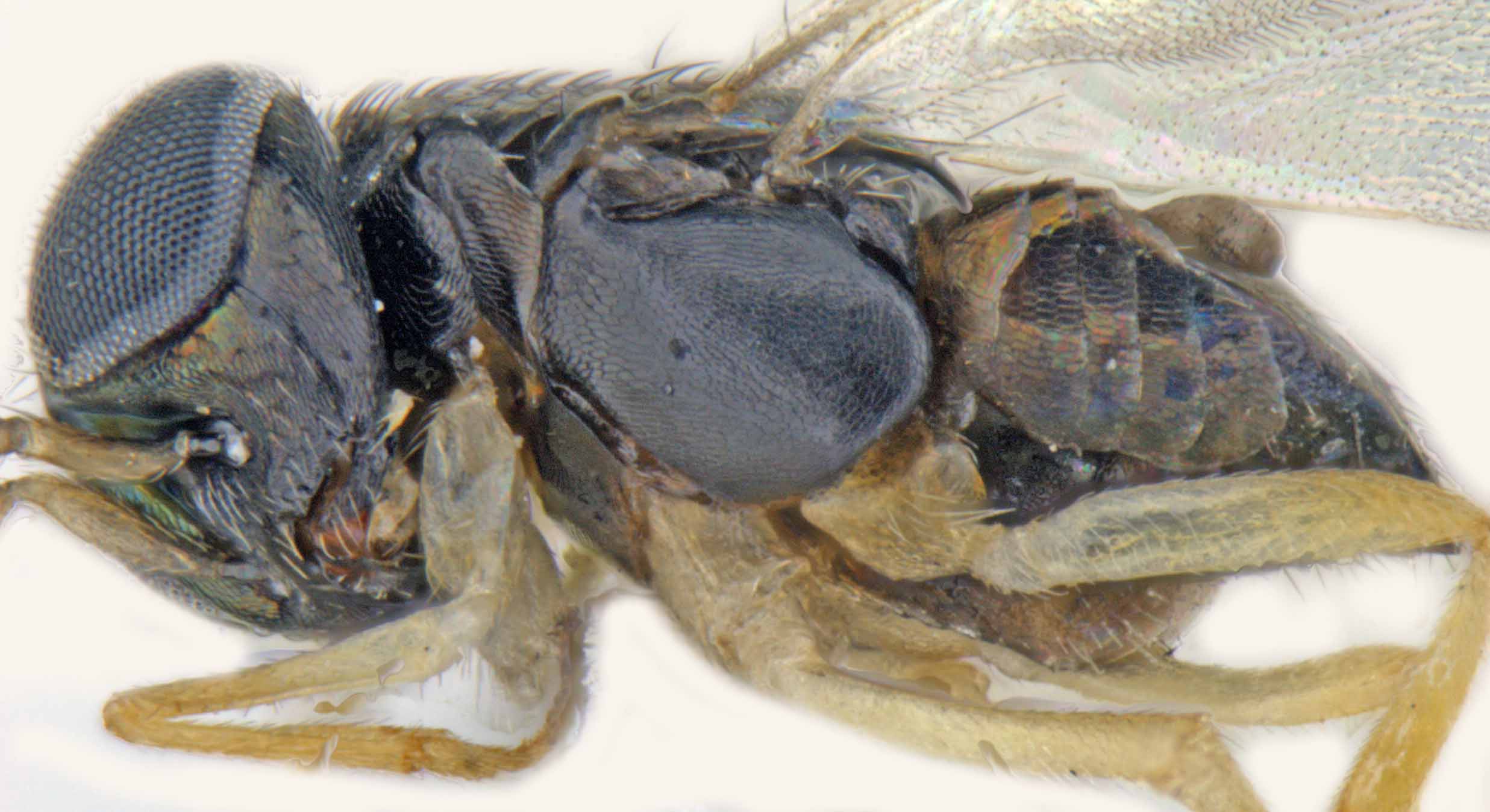 Mesopleuron Mesopleuron
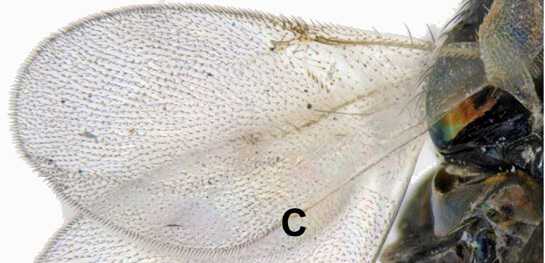 Wing Wing Parasitized eggs Parasitized eggs
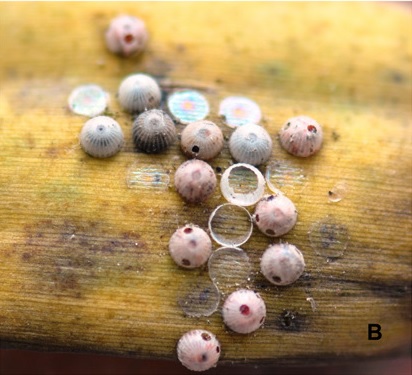 Parasitized eggs with emergence holes Parasitized eggs with emergence holesImagesDistribution
India (karnataka), western India, southern India, northern India (Himalaya east), southern Philippines, Taiwan, Japan, and Southern China to South East mainland Asia.
BiologyThe freshly laid eggs of E. torus are preferred for parasitism by O. pallidipes. It is reported to cause 80–82% parasitism and on an average 2−3 adults emerged per parasitized egg. Earlier it has been recorded from several Lepidoptera, including Eupterotidae, Gracillariidae, Nymphalidae, Papilionidae and Pieridae, but the eggs of Gracillariidae are too small to support this species. A record from egg of a buprestid represents a misidentification. Perhaps there is also an erroneous host record from unspecified aphid,
possibly because a mummified aphid is almost similar in size, shape and colour to a parasitized egg of E. thrax (Cock, 2015).
Reference
CreditsImages and factsheet prepared by Dr. Ankita Gupta, Scientist, NBAIR. Web content added by Lavanya, 28-02-2018.
|
